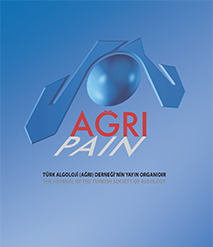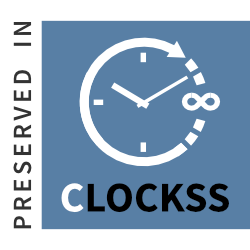Quick Search
Volume: 19 Issue: 4 - 2007
| REVIEW | |
| 1. | The experience of chronic pain and pain beliefs Hanife Özlem Sertel Berk, Güler Bahadır PMID: 18159574 Pages 5 - 15 Chronic pain is well appreciated as a universal problem in the sense that it causes serious impairment in the individuals’ physical and psychosocial status of functioning. Research, psychological assesment and psychotherapeutic process towards chronic pain is most frequently based on the principles of cognitive-behavioral approach (CBA). However, Sharp criticised CBA for its ongoing dependency on the operant premises of the pure behavioral approach and proposed a “reformulated CBA” where the emphasis is on specific cognitive factors, primarily the pain beliefs. According to current studies in chronic pain, it is becoming increasingly apparent that pain beliefs play an important role in the maintainance and management of chronic pain. In Turkey, there are no studies and tools on pain beliefs. In this specific review, the literature on pain beliefs is discussed in terms of necessity of research and material development on pain beliefs that tab factors specific to Turkish culture. |
| EXPERIMENTAL AND CLINICAL STUDIES | |
| 2. | The effects of various doses of intrathecal morphine in addition with ropivacaine in combined spinal-epidural technique for labour analgesia Hamdiye Tutan Çulha, Dilek Özdamar, Kamil Toker, Mine Solak PMID: 18159575 Pages 16 - 23 We evaluated the duration of analgesia, side effects and neonatal effects of intrathecal ropivacaine combined with two different doses of morphine using combined spinal epidural (CSE) technique for labour analgesia. Fourty term parturients were enrolled. Group I received 0,2% ropivacaine 3 mg + morphine 50 μg and Group II received 0,2% ropivacaine 3 mg + morphine 100 μg intrathecally.When VAS for pain was equal or above 30 mm, PCEA(Patient controlling epidural analgesia) was started using 0,1% ropivacaine. There wasn't any statistical significant difference considering the duration of analgesia between two groups. The first stage of labour was significantly shorter in Group II then Group I, and the epidural local anaesthetic volume was significantly lower in Group II. The most common side effect in both groups was pruritis. There was not any side effect of local anaesthetic and opioid on the newborns. Adequate analgesia was obtained during labour with CSE technique, using ropivacaine combined with 50 and 100 μg morphine intrathecally. However cervical dilatation was faster and epidural local anaesthetic volume was lower in the group in which 100 μg morphine was used. Also considering the unchanged incidence of the side effects, 3 mg 0,2% ropivacaine + 100 μg morphine may be a useful combination for labour analgesia. |
| 3. | Comparison of tramadol, tramadol-metamizol and tramadol-lornoxicam administered by intravenous PCA in management of postoperative pain Sibel Özçakır Kemal, Şaziye Şahin, Alparslan Apan PMID: 18159576 Pages 24 - 31 Comparison of tramadol, tramadol-metamizol and tramadol-lornoxicam administered by intravenous PCA in management of postoperative pain. The aim of the present study was to compare of the postoperative analgesic effects of tramadol, combinations of tramadol-metamizol and tramadol-lornoxicam administered by intravenous Patient Control Analgesia (PCA) in lower abdominal surgery. Sixty adult, female patients who undergoing lower abdominal surgery, were included in this study. Patients were randomized to three groups. The solutions were prepared containing 500 mg tramadol in 50 ml saline (10 mg/ml tramadol) for Group I, 250 mg tramadol+3000 mg metamizol in 50 ml saline (5 mg/ml tramadol+60 mg/ml metamizol) for Group II and 250 mg tramadol+20 mg lornoxicam in 50 ml saline (5mg/ml tramadol + 0.4mg/ml lornoxicam) for Group III. Loading dose 10 ml was administrated within 30 min 30 to 40 min before the end of the surgery. PCA was started at the first complaint of pain. Pain was evaluated by VAS in every 15 minute intervals at the first hour and later at 2nd, 4th, 8th, 12th, 18th and 24th hours postoperatively. Vital parameters, side-effects, sedation scores and total analgesic consumptions were also recorded concurrently.. Total tramadol and anti-emetic consumption, the incidence of postoperative nausea and vomiting (PONV) were significantly higher in group I than the other groups (p<0.05). In conclusion; Tramadol-metamizol and tramadol-lornoxicam combinations administered by intravenous PCA provide efficient postoperative analgesia with less side effects. |
| 4. | The effect of opioid administration by different routes on the psychological functions of elderly patients Nurten İnan, Türkay Çakan, Mehmet Özen, Nihan Aydın, Dilek Gürel, Bülent Baltacı PMID: 18159577 Pages 32 - 38 Psychological status of patients during epidural and intravenous (iv) morphine administration are not known enough. It’s known that after administration of morphine epidurally and intravenously plasma concentrations are similar but the concentrations in cerebrospinal fluide are different. The effects of two postoperative analgesia treatment regimens on the psychological and mental functions of the elderly after major orthopedic surgery were investigated in this randomized, blinded study. Morphine was used epidurally in Group E and intravenously in Group IV with patient controlled analgesia method for postoperative analgesia treatment. All patients were assessed for psychological status the day before surgery and 2 days after surgery using the Brief Symptom Inventory (BSI). The results of the BSI were assessed with the Global Severity Index (GSI). Nine subscales were also derived: depression, somatization, obsessive-compulsive, anxiety, interpersonal sensitivity, hostility, phobic anxiety, paranoid ideation, and psychoticism. There was not significant difference between the groups for preoperative and postoperative GSI results (p > 0.05). Only interpersonal sensitivity subscale results in Group IV were decreased compared to the baseline (p < 0.001). Preoperative BSI and submeasurement test scores revealed no correlation with total morphine consumption in both groups (p > 0.05). Mental changes like agitation, time and place disorientation were seen equally in both groups. This study showed that after epidural and intravenouse morphine administration, no psychologycal changes were observed in the postoperative period compared with baseline. Patients who received morphine intravenously were showed less interpersonal sensitivity in the postoperative period. |
| CLINICAL CONCEPTS AND COMMENTARY | |
| 5. | Prevalence of patent foramen ovale in patients with migraine Aslı Demirtaş Tatlıdede, Buket Oflazoğlu, Seden Erten Çelik, Ülker Anadol, Hulki Forta PMID: 18159578 Pages 39 - 42 Recent evidence supports that the prevalence of patent foramen ovale is higher in patients with migraine with aura. We conducted a case-control study and searched for intra-atrial right to left shunt in 53 patients with migraine. PFO was detected by means of transthoracic echocardiography with administration of contrast medium during valsalva maneuver and the results were compared with age and sex matched 27 healthy controls. Patent foramen ovale was more frequent in the migraine group (p<.01). The percentages of PFO in migraine patients with aura, without aura and the control group were 66.7 %, 47.4 % and 22.2 %, respectively. Our results are supportive of an association between PFO and migraine, especially with aura. |
| INTERVENTIONAL TREATMENT | |
| 6. | EAGLE’s SYNDROME: a case presentation Selahattin Genç, Şefik Sinan Kürkçüoğlu, Ümit Tuncel, Mehmet Ali Babademez, Baran Acar, Hayriye Karabulut PMID: 18159579 Pages 43 - 47 Eagle’s syndrome occurs when an elongated styloid process or calcified stylohyoid ligament causes recurrent throat pain or foreign body sensation, dysphagia. Diagnosis can usually be made on physical examination by digital palpation of the styloid process in the tonsiller fossa. Three-dimensional computed tomography can utilized for supporting diagnosis. The treatment of Eagle’s syndrome is primarily surgical. The styloid process can be shortened through an intraoral oe external approach. We report a 46- year-old woman with the seymptomatology of Eafle’s syndrome and literature review. |





